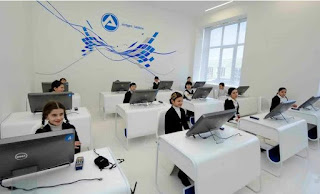The traditional classroom setup has been changing for the past few years, and the COVID-19 pandemic has accelerated this change. With the advancement of technology, students can now access education from anywhere in the world. This article will discuss the future of education, with a focus on technology in the classroom. The traditional
Technology in the Classroom
The use of technology in the classroom has been increasing over the years, and it is expected to continue to grow. Technology has made learning more engaging and interactive, and it has also made it easier for students to access education from anywhere in the world. Some of the technologies that are being used in the classroom include smartboards, tablets, and laptops.
Smartboards
Smartboards are becoming increasingly popular in classrooms. They are interactive whiteboards that allow teachers to project images, videos, and other content on a large screen. Smartboards also have touchscreens that allow teachers to interact with the content on the screen. They can use their fingers or a special pen to draw or write on the board. Smartboards are great for visual learners as they provide a more engaging and interactive learning experience.
Tablets
Tablets are also becoming more popular in the classroom. They are portable and easy to use, making them ideal for students. Tablets can be used to access textbooks, take notes, and collaborate with other students. They also have apps that can help students with their studies. Tablets are also great for students with learning disabilities as they can be customized to meet their needs.
Laptops
Laptops are also commonly used in classrooms. They are more powerful than tablets and can be used for more complex tasks. Laptops can be used for research, writing papers, and creating presentations. They also allow students to collaborate with each other on projects.
Virtual and Augmented Reality
Virtual and augmented reality are two technologies that are becoming increasingly popular in the classroom. Virtual reality allows students to experience things that are not possible in the real world. For example, they can visit historical sites or explore space. Augmented reality, on the other hand, allows students to interact with virtual objects in the real world. For example, they can see how a building will look before it is built.
The Future of Education
The future of education is bright, and technology will play a significant role in it. Here are some of the ways that technology will impact education in the future.
Online Learning
Online learning has been around for a while, but it is expected to become more popular in the future. Online learning allows students to access education from anywhere in the world. You can study at your own pace and on your own schedule. Online learning is also more affordable than traditional classroom learning.
Personalized Learning
Personalized learning is another trend that is expected to become more popular in the future. Personalized learning allows students to learn at their own pace and in a way that works best for them. This may be executed via using technology. For example, software can be used to create personalized learning plans for each student based on their learning style, interests, and abilities.
Gamification
Gamification is another trend that is expected to become more popular in the future. Gamification involves using game-like elements to make learning more engaging and interactive. For example, students can earn points or badges for completing assignments or mastering a skill. Gamification can also be used to create simulations and scenarios that allow students to apply what they have learned in real-world situations.
Artificial Intelligence
Artificial intelligence is already being used in education, and it is expected to become more prevalent in the future. Artificial intelligence can be used to create personalized learning plans, assess student performance, and provide feedback. It can also be used to create chatbots that can answer student questions and provide support.















0 Comments
If you have any doubts, Please let me know